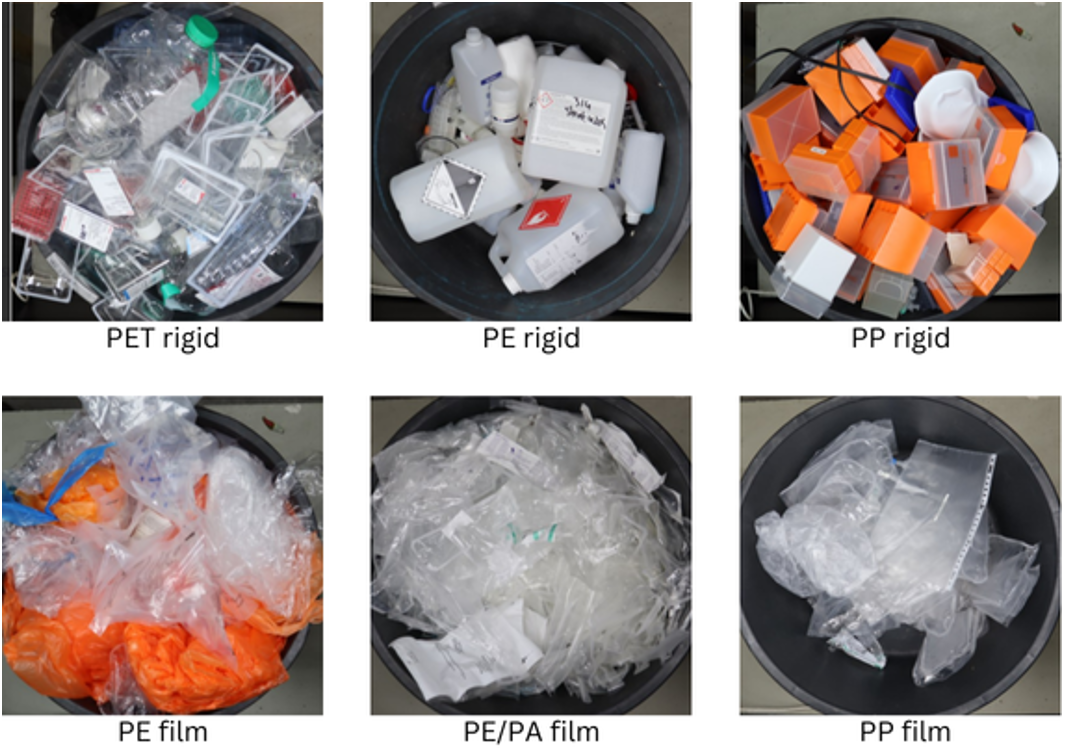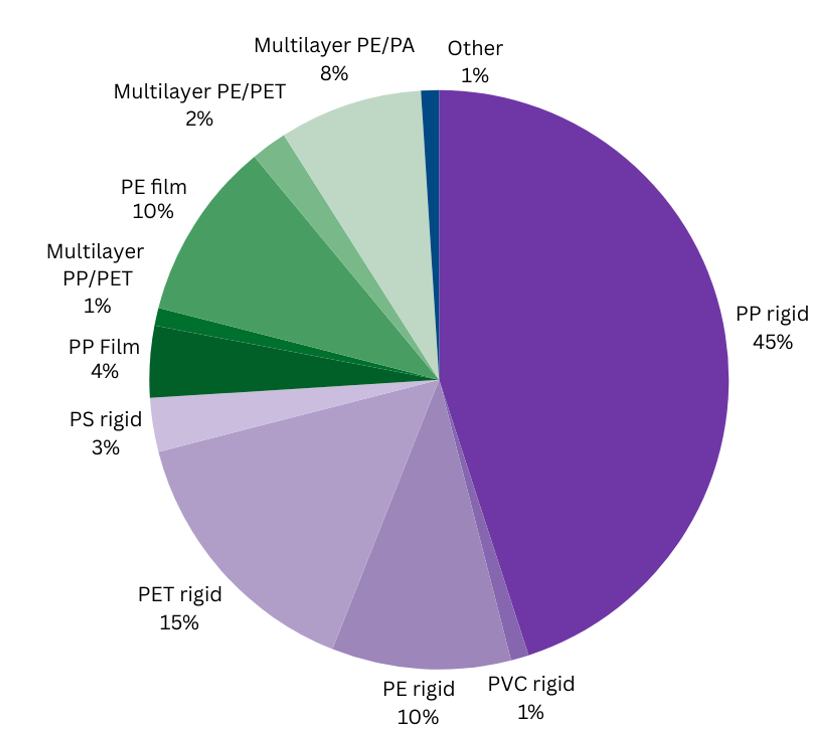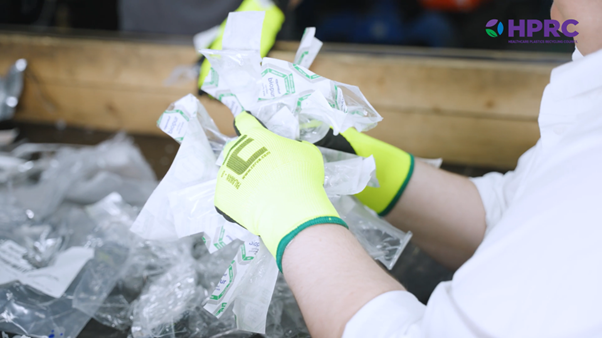A Pilot Study Conducted in the Netherlands
Packaging is a ubiquitous aspect of healthcare treatments and while hospitals and their staff often share a strong purpose to address packaging waste, the challenge is significant. As 85% of hospital waste is considered to be non-hazardous, free from patient contact and contamination, a more sustainable management of packaging waste at the end of life should be feasible. Realizing the economic value of this waste will help drive change and enhance recycling efforts.
Our previous case study in 2024 involved four European hospitals that were managing plastic waste at varying levels. The study focused on plastics waste generated within hospital operating rooms, the challenges of waste sorting at the point of use, and the implementation of waste collection systems.
In a new project, the Healthcare Plastics Recycling Council (HPRC) aims to gain insight into the sorting of healthcare plastic packaging into streams categorized by material type and suitable for subsequent recycling. This first pilot study assesses the sortability of a small batch of healthcare plastic packaging waste generated within a hospital. The long-term aim of the project is to demonstrate that commercial sorting and recycling of healthcare plastic packaging waste is possible, can be scaled, and that the recycled material has financial value. This necessitates the ability of healthcare plastic packaging to be identified and separated from packaging waste into intended waste material fractions with high sortability yields.
Our Partners
Our partners in this initiative include UMC Utrecht (UMCU) hospital, based in Utrecht, the Netherlands, which provided a batch of uncontaminated healthcare plastic packaging waste. This waste was subsequently sorted by our second partner, the National Test Centre Circular Plastics (NTCP) also in the Netherlands.
The Pilot Study
Collecting the Test Batch
At UMCU hospital, a healthcare plastic packaging waste batch of about 2 cubic meters was collected from surgery preparation areas, wards, and medication rooms. The packaging was free from contamination and included only healthcare plastic packaging waste, excluding other waste sources such as consumer packaging waste. Both flexible and rigid plastic packaging were collected to represent a typical mix of healthcare plastic packaging formats and materials used in hospitals. Sterilization wraps or shrink wraps were not included in the study as UMCU has dedicated recycling programs for their end-of-life treatment.
During the pilot study, UMCU’s routine procedures for waste segregation were followed with no additional instructions on disposing of healthcare plastic packaging. The test batch consisted of healthcare plastic packaging waste collected at specific points in the hospital.
Sorting and Analyzing the Test Batch
The collected test batch was manually sorted at the NTCP facility following RecyClass guidance for waste segregation, considered a benchmark for commercial waste sorting operations. The batch was sorted into typical waste streams according to polymer type and form (rigids/flexibles). Manual sorting is a reliable way to sort smaller batches for which automated technologies are not feasible due to the small sample size. A portable NIR-spectrometer was used to determine unknown packaging materials.

Rigid packaging represented 74% of the test batch by weight, while flexible mono-material and multilayer packaging accounted for the remaining 26%.
In principle, for the rigid packaging waste, the polypropylene (PP) and polyethylene (PE) packaging could be recycled within polyolefin mono-material streams. Moreover, the polyester (PET) rigid packaging could be recycled within the rigid PET stream. The percentage of these packaging that could actually be sorted and recycled would be limited by other Design for Recycling factors. For example, those that include a paper label may not be suitable for sorting or recycling.

For the flexible materials, PE (10%) and PP (4%) films could be recycled within flexible mono-material polyolefin streams. Multilayer flexibles that contain polyamide (PA) or PET components (11% of the waste batch) remain a challenge and for the moment would be considered non-recyclable within most European countries.
From this test batch, in a best-case assessment, up to 84% of the packaging waste could be directed into an appropriate stream for subsequent recycling.
Next Phase of the Project
This pilot phase focused on a small quantity of packaging material from specific locations within the UMCU hospital and was manually sorted to generate a more detailed picture of material types. The next phase is to evaluate a larger batch of plastic packaging waste, moving from manual sorting to automatic sorting representative of commercial sorting facilities.
Our ongoing aim is to:
-
- Provide further insights into the expected material composition of healthcare plastic packaging waste.
- Assess how effectively the waste can be commercially sorted into specific waste streams, suitable for recycling.
- Evaluate the quality of the recycled waste and the value it may have when used in new applications.
- Identify types of packaging that are not currently suitable for recycling and comment on how packaging design could further improve recycling rates.
Throughout Europe, many healthcare facilities and waste management companies are developing systems to collect, sort and recycle healthcare plastic packaging waste. If you are interested in our work or wish to be involved, please reach out to HPRC.
About HPRC
HPRC is a private technical coalition of industry peers across healthcare, recycling, and waste management industries seeking to improve the recyclability of plastic products within healthcare. Made up of brand-leading and globally recognized members, HPRC explores ways to enhance the economics, efficiency, and ultimately the quality and quantity of healthcare plastics collected for recycling in support of a circular plastics economy. HPRC is active across the United States and Europe working with key stakeholders, identifying opportunities for collaboration, and participating in industry events and forums. For more information, visit www.hprc.org and follow HPRC on LinkedIn.

